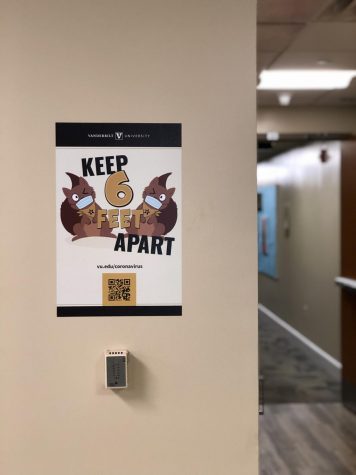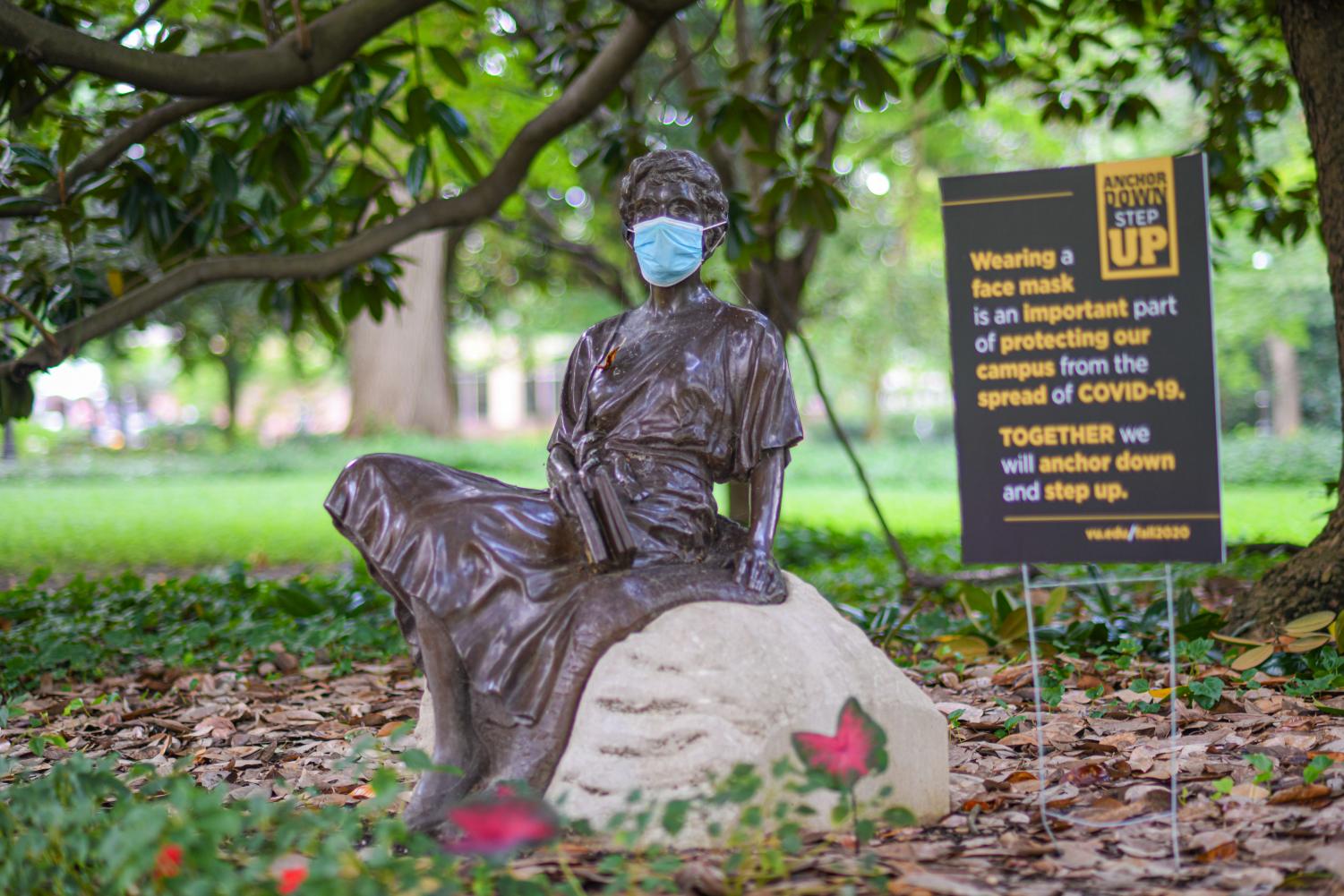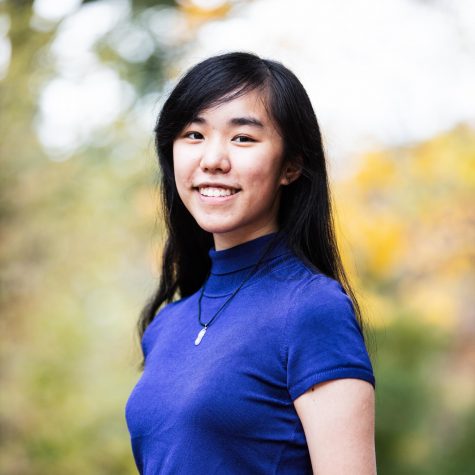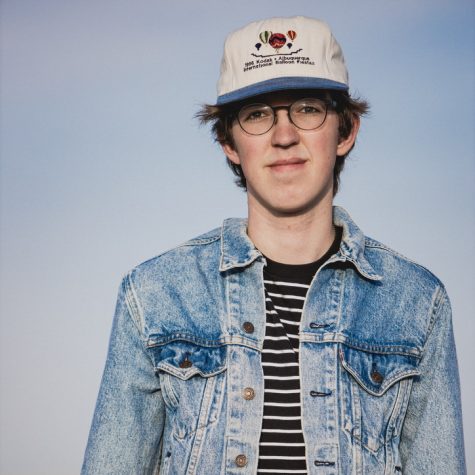
It’s the sight that greets me every morning: Cornelius Vanderbilt cast in bronze, eyeing me from behind a white mask through the screen as I type in my VUnet ID. “Anchor down, and mask up,” I often imagine the statue telling me. A few more clicks launch me into my morning Zoom classes, and I bid the landing page goodbye. We’ll meet again soon enough.
As Vanderbilt rolled out Return to Campus updates all throughout the summer, sights like Cornelius’ face mask became a constant reminder that my first year of college would have to revolve around new normals. I’m slowly getting the hang of virtual introductions, so hi there! I’m Helen, and I’m a first-year from Boyds, Maryland. I’m studying Neuroscience, but I also love art, writing and all sorts of creative expression. I don’t plan on leaving those interests behind anytime soon, so this year I’ll be writing this column to explore some of the niches of student life where STEM and the arts can intersect.
While we’re all learning to navigate a socially-distanced campus life, it’s safe to say that the ubiquity of Vanderbilt’s COVID-19 messaging makes precaution hard to forget. “Anchor Down, Step Up” is a warranted call for responsibility, but lately I’ve also enjoyed mulling over how that mantra—embodied by masked statues and cartoon squirrel posters printed with “Keep 6 Feet Apart” reminders—has given us something else as well: a sampling of the pandemic’s influence on public art across the world.

Like everyone else, I watched the constants in my life fall into a buzz of uncertainty when we were abruptly locked down in our homes in March. It was tempting to turn to the past for answers, whether that meant reanalyzing responses to the 2002–2004 SARS outbreak, the 1918 Spanish Flu pandemic or even the 14th century bubonic plague. After I tried to add some color to my quarantine by taking up painting projects, a few days of combing for inspiration online showed me that the art world was taking this time to revisit history as well.
Art is inherently reactive, and with an uncertain future ahead, many artists and art journalists are looking back on past art movements jump-started by crises. The Black Death changed the trajectory of medieval and Renaissance art, with artists highlighting society’s struggle to reconcile death, guilt and fear with religion for the next century. The 1918 Flu, combined with the effects of two world wars in the same century, spurred philosophical and cultural movements centered on the meaninglessness and absurdity of living. Artwork of the time reflected these schools of thought—movements like abstraction and Dadaism, which embraced the absurd and nonsensical, defined this arc of art history.
These pandemics of the past follow a familiar pattern: there’s an undeniable interdependence between matters of public health, their social influence and what we create. Now, half a year after most of the world first went into quarantine, we’re witnessing that same pattern settle into place. The enormous body of coronavirus-inspired artwork documents a global experience of the pandemic, along with the messages, values and suffering at its forefront.
For many of us, the role art plays in the public sphere has also become more prominent. In Milwaukee, an expansive mural honoring medical workers emblazons a city block. London’s subway trains were briefly decorated with a Banksy graffiti piece of sneezing rats, which urged the public to wear face masks. Landmark statues across the globe, from the Christ the Redeemer monument overlooking Rio de Janeiro to Wall Street’s Charging Bull, have donned the same masks as Cornelius.
Although these examples only encompass artists’ immediate reactions to an ongoing pandemic, I like to see this art as a cause for optimism. These public displays are unified by themes of community awareness, altruism, empathy and resilience. Together, they make a statement: we still live in a world that’s not first and foremost characterized by death, but rather a persistent hope that we’ll work together to help our world recover.
So, whenever I wander around campus and catch sight of Harold Stirling Vanderbilt’s face mask towering over me outside of Rand, I think of hope. Because, when it comes down to it, Vanderbilt’s decision to welcome students back was an immensely hopeful one. We can’t forget that the people behind the art, the squirrel posters and the statues can really only remind us of what they hope to see. It will be up to us to listen, and to act.





